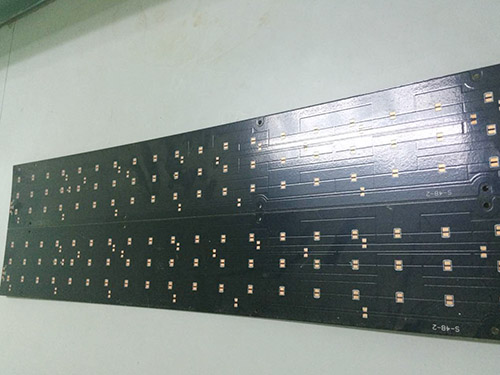
Dongguan QiMao Electronics Co., Ltd.
Dongguan Xunyao Electronic Technology Co., Ltd.
Dongguan Huajun Electronics Co., Ltd.
+86 0769-82116029
+86 139-2250-7529

+86 0769-82116029
+86 139-2250-7529
Flying probe testers do not rely on pin patterns mounted on a fixture or bracket. Based on this system, two or more probes are mounted on tiny heads that can move freely in the x-y plane, and the test points are directly controlled by CADI Gerber data. The dual probes can be moved within 4 mils of each other. The probes can move independently, and there is no real limit to how close they are to each other. The tester with two arms that can move back and forth is based on the measurement of capacitance. The circuit board is pressed against the insulation on a metal plate that acts as the other metal plate for the capacitor. If there is a short between the lines, the capacitance will be larger than at a certain point. If there is an open circuit, the capacitance will be smaller.
Test speed is an important criterion for selecting a tester. A bed of needles tester can accurately test thousands of test points at a time, while a flying probe tester can only test two or four test points at a time. Also, a bed of needles tester may only cost 20-305 for a single-sided test, depending on the complexity of the board, while a flying probe tester takes Ih or more to complete the same evaluation. Shipley (1991) explains that even though the mobile flying probe test technique is considered slow by manufacturers of high-volume printed circuit boards, this method is a good choice for manufacturers of lower-volume, complex circuit boards.

For bare board testing, there are dedicated test instruments (Lea, 0). A more cost-optimized approach is to use a general-purpose instrument, although this type of instrument is initially more expensive than a dedicated instrument, its initial high expense will be offset by a reduction in the cost of individual configurations. For general purpose grids, the standard grid for leaded components and surface mount devices is 2.5mm. At this time, the test pad should be greater than or equal to 1.3mm. For a grid of 1mm, the test pads are designed to be larger than 0.7mm. If the grid is small, the test pins are small, brittle, and easily damaged. Therefore, it is best to use a grid larger than 2.5mm. Crum (1994b) states that the combination of a general-purpose tester (a standard grid tester) and a flying probe tester enables accurate and economical inspection of high-density circuit boards. Another method he suggests is to use a conductive rubber tester, a technique that can be used to detect points that deviate from the grid. However, the difference in height of the pads with hot air leveling will hinder the connection of the test points.
About Us
Company Profile Production Strength Honor Partner PCB circuit boardTechnical Support
Cooperation StrengthProcess CapabilityProcess explanationNews Center
NewsIndustry InformationCommon ProblemContact Us
Contact Online Message1-4th Floor, Back Building, No. 305 Zhenxing Avenue, Taiyuan Community, Xiegang Town, Dongguan City
Tel: +86 0769-82116029/82116039
Contact: +86 13922507529/Mr. Huang


